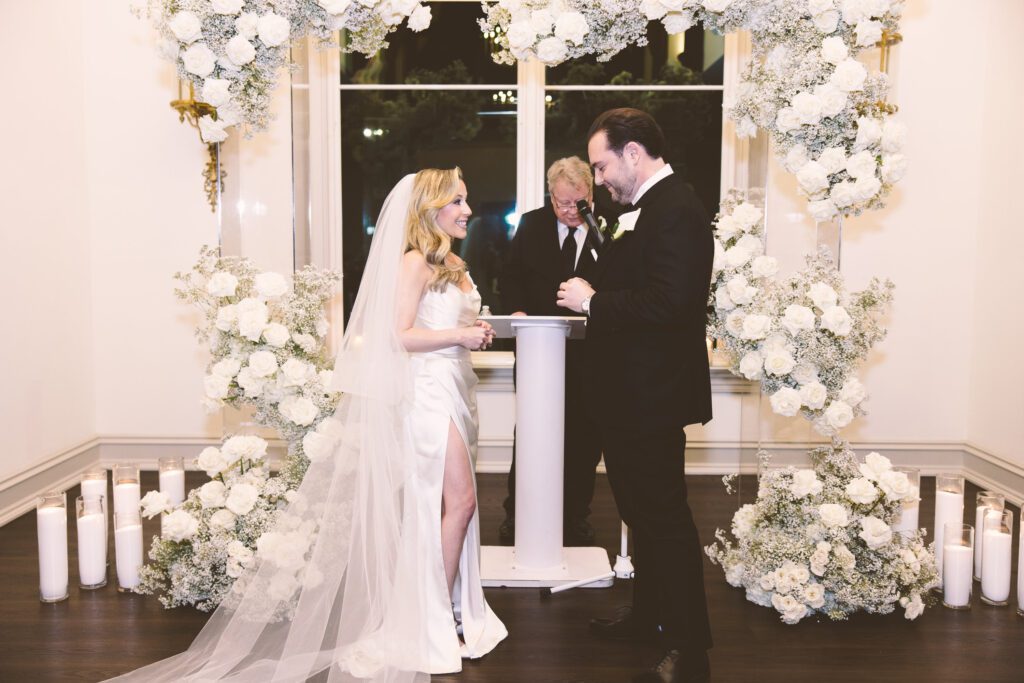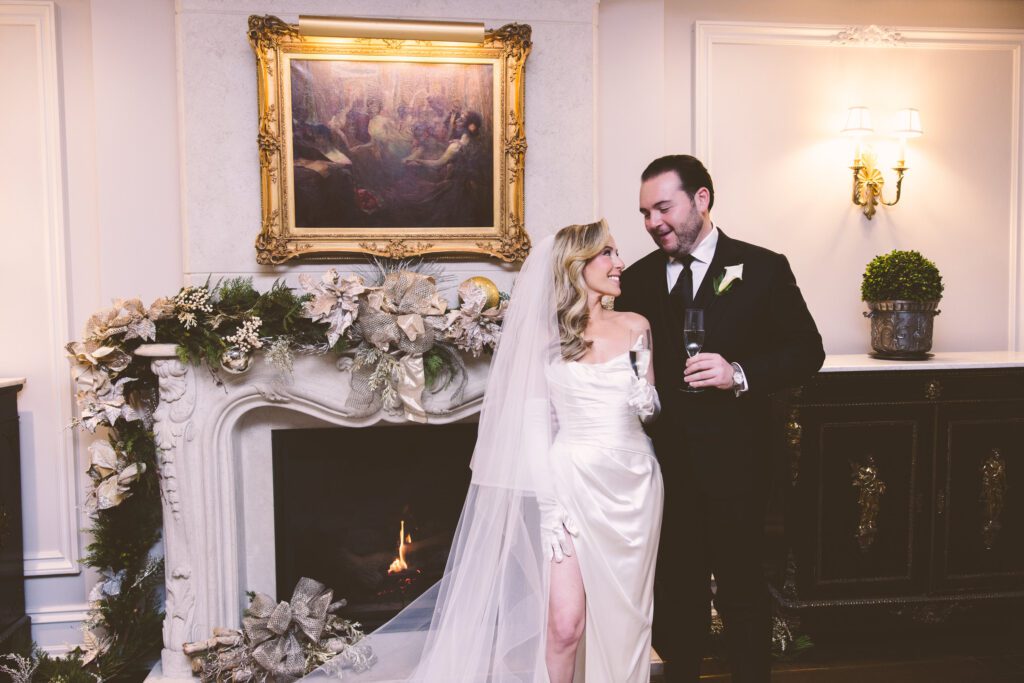Christian Wedding Traditions reflect a sacred covenant blessed by God and witnessed by the community. Marriage lies at the heart of these ceremonies, shaping many traditional elements—such as clergy involvement, hymns, and biblical readings.
The distinct structure and meaning of Christian weddings become clear when you understand these traditions. They consistently emphasize unity, fidelity, and divine guidance. Indeed, these rituals are profound expressions of faith and partnership.
Christian wedding ceremony traditions distinctively blend historically rooted rituals with denominational practices. Faith and scripture also play a significant part. They guide the ceremony and vows, which in turn reflect both cultural heritage and theological beliefs.
Foundations of Christian Wedding Customs
The traditional Christian wedding ceremony combines rituals rooted in history, varied practices among denominations, and the significant role of faith and scripture in guiding the ceremony and vows. These elements reflect cultural heritage and theological beliefs.
Historical Origins
Adapting customs from Jewish and Roman traditions, Christian weddings found their roots in early Christianity. Centuries saw the ceremony evolve. It had, by the Middle Ages, transformed into a sacred rite with Church endorsement.
Symbolizing an eternal bond, the ring exchange commenced; meanwhile, the nuptial blessing would have underscored divine approval.
Vows and key elements, for instance, the bridal procession (which included the father’s act of giving his daughter’s hand), were to become standardized.
This reflects a shift from marriage as merely a legal contract to a spiritual covenant overseen by clergy, emphasizing unity, faithfulness, and divine blessing—tenets still central today.

Denominational Variations
Protestant wedding traditions often emphasized scripture. Personal vows were also central. The services themselves could have been formal liturgies or they might have been simpler.
Orthodox Christians will continue to maintain ancient rituals. The crowning ceremony is one such ritual. Here, ornate crowns had united the couple. They also shared a common cup.
Some denominations require premarital counseling. These variations show how doctrine influences the ceremony’s structure, language, and symbolism.
| Denomination | Key Wedding Features |
|---|---|
| Catholic | Nuptial Mass, exchange of rings, blessings |
| Protestant | Scripture readings, personal vows |
| Orthodox | Crowning ceremony, common cup shared |
Role of Faith and Scripture
Marriage, framed as a covenant before God, has faith as its central component in Christian weddings. Love, respect, and commitment were highlighted through the common reading of Bible scriptures. Passages such as 1 Corinthians 13 (which speaks of love) and Ephesians 5 (which pertains to marital roles) would be selected.
Vows usually reflect biblical principles, binding the couple spiritually and legally. Clergy guide this spiritual understanding, stressing marriage’s sacred purpose.
Through prayer, hymns, and blessings, people show they rely on God. This reinforces that marriage is a commitment before God.
Pre-Wedding Customs
Before Christian weddings, special activities and planning highlight commitment, faith, and community backing. This helps couples prepare in spirit and for their life together.
Engagement Ceremonies
Engagement ceremonies mark the formal agreement to marry. Often, couples exchange rings they got from the best places to buy engagement rings in NYC, symbolizing their promise, families meet, and a pastor gives a blessing. This event carries religious significance, focusing on seeking God’s guidance. Some communities announce it during a church service.
Premarital Counseling
For many couples, pre-wedding counseling by churches is mandated. A pastor or counselor addresses faith, communication, conflict, and roles. This process helps couples identify challenges and build faith from biblical marriage insights.
Bridal Showers
Bridal showers function as social celebrations for the bride. These are typically hosted by friends or family, with home-related gifts being a traditional aspect. These events, which may feature prayers or blessings, have contributed to fostering connections within the church community.
Ceremony Structure
A Christian wedding follows a structured format, highlighting key moments that symbolize the couple’s union under God.
Order of Service
The wedding service held at top wedding venues worldwide usually opens with the officiant giving a welcome, which is then followed by prayers or hymns. The couple will then share readings and make their vows to each other. An exchange of rings can happen after this. The couple will then receive a final blessing, then announced as married. Some churches may also include unity, three candle lighting, or communion.
Processional and Recessional
The processional is how the wedding ceremony starts. Usually, the groom and the person leading the service enter first. The wedding party follows them. Finally, the bride walks down the aisle, often with her father or another family member.
After the couple is married, the recessional begins. The bride and groom walk out first. Then, their wedding party and guests follow. This signals that it’s time for the celebration to start.
Exchange of Vows
Central to the ceremony, vows are promises to love, honor, and cherish for life, often accompanied by exchanging rings. Vows can be traditional, from religious texts, or personalized, but typically include commitments to faithfulness and mutual support, reflecting the couple’s dedication under God as a verbal covenant.
Scripture Readings
Reading scripture is a cherished tradition emphasizing love, commitment, and faith. Common choices like 1 Corinthians 13, Ephesians 5, and Colossians 3 remind the couple and guests of marriage’s spiritual foundation, offering reflection and guidance grounded in Christian belief.

Symbolic Rituals
Certain rituals carry deep spiritual and cultural meaning, signifying commitment, unity, and faith.
Exchange of Rings
The wedding ring, with its unbroken circular shape, symbolizes eternal love and commitment. The groom and bride place rings on each other’s fingers as a visible sign of their vows, often with words emphasizing faithfulness. Usually made of precious metal, this tradition underscores marriage’s sacred, lifelong nature.
Unity Candle
This ceremony symbolizes two individuals and their families joining. The bride and groom each light a smaller candle and then together use these to light a larger, central one, representing their united future. Often performed after vows and rings, parents may also participate in lighting the smaller candles.
Communion
Communion (the Eucharist) in a wedding is a sacrament signifying shared faith and reliance on Christ, involving partaking of bread and wine (representing Christ’s body and blood). This ritual emphasizes the marriage’s spiritual foundation. While not all Christian weddings include it, communion serves as a solemn commitment to Christian teachings within marriage.
Roles and Participants
Various individuals have specific roles reflecting tradition and commitment.
Officiant
A pastor, priest, or minister typically officiates, conducting the service according to religious customs. This includes the sermon, guiding vows, and pronouncing the marriage. A significant moment is when the father gives away his daughter, symbolizing approval and the transfer of care.
The officiant also ensures legal fulfillment, like signing the marriage license, requiring both spiritual leadership and legal authority.
Bridal Party
The bridal party (maid of honor, bridesmaids, best man, groomsmen) assists the couple before and during the ceremony, offering support and standing with them during vows. They often participate in traditions like holding rings or bouquets, their presence symbolizing shared joy.
Witnesses
Witnesses play a crucial legal and symbolic role, typically two individuals who sign the marriage certificate to validate the union. They confirm the marriage occurred with both parties’ consent, emphasizing accountability and community support.
Music and Hymns
Music significantly contributes to a sacred atmosphere.
Popular Wedding Hymns
Couples often select hymns on love, faith, and commitment, such as “Amazing Grace,” “Great Is Thy Faithfulness,” and “Love Divine, All Loves Excelling.” These reflect religious devotion and invite congregational worship, typically sung at key moments like the opening or recessional.
Instrumental Selections
Instrumental music, often organ, piano, or strings, complements the ceremony. Traditional pieces like Bach’s “Jesu, Joy of Man’s Desiring” or softer hymn arrangements help maintain a respectful, emotive tone.
Reception Traditions
Christian wedding receptions often include meaningful rituals involving family and friends, highlighting gratitude and celebration. These moments can be captured with photojournalistic wedding photography.
Blessings and Toasts
A pastor or family member often offers a prayer of thanks before meals, asking for God’s guidance. Toasts by the best man, maid of honor, or relatives follow, with personal stories and encouragement, publicly supporting the new family bond.
First Dance
This symbolic moment marks the couple’s unity, usually early in the reception to a meaningful song, focusing on their emotional connection and signaling the start of social activities.
Cutting the Cake
This ritual symbolizes sharing and partnership. The couple cuts the first slice together, then often feeds each other a piece, reflecting mutual nurture. The cake is then served to guests, blending joy and symbolism.
Attire and Symbols
Wedding attire and symbols carry specific meanings of purity, commitment, and tradition.
Wedding Dress
Traditionally, brides wear a white wedding dress symbolizing purity and new beginnings, a prominence heightened after Queen Victoria’s wedding.
Many Christian brides choose modest styles, reflecting respect for the religious setting, often with simplicity and dignity, perhaps incorporating family heirlooms.
Veil and White Attire
The bridal veil represents modesty and reverence, historically also the bride’s submission to God and the church. Lifting the veil can signify the groom’s acceptance.
White attire for the bride (and sometimes others) stands for purity and cleansing of past sins, linked to biblical imagery.
Bouquet Toss
The bride tossing her bouquet to unmarried women symbolizes passing on good fortune. It’s believed whoever catches it will be next to marry, blending ancient custom with modern celebration.
Regional and Cultural Variations
Christian wedding traditions vary by geography and culture, reflecting diverse liturgical practices and community roles. Traditions upheld at New Jersey wedding venues may vary from those in New York.
Western Christian Traditions
Weddings often occur in churches with a formal liturgy. Vows and rings are central. White gowns became popular in the 19th century. Receptions feature dances, cake cutting, and toasts.
Eastern Christian Traditions
Eastern Orthodox and Catholic weddings emphasize sacramental rites like the crowning ceremony (symbolizing martyrdom and marital responsibility) and sharing a common cup. Rituals include a ceremonial walk and the bridal veil. Iconography and sacred chants are central in often longer services.
Indigenous Customs
Indigenous Christian communities blend local customs with Christian rituals. Native American weddings might include smudging ceremonies; African Christian weddings often feature vibrant clothing, drumming, and dancing alongside church ceremonies, with significant community involvement. This honors ancestral heritage and Christian theology.
Modern Adaptations of Christian Weddings
Today’s Christian weddings often blend tradition with updated customs reflecting social changes and diversity.
Contemporary Ceremony Elements
On their special day, many couples include personalized vows alongside traditional ones. Music might be contemporary Christian songs or meaningful secular pieces. Technology like live streaming is common. Visuals may also shift, with different seating arrangements or modern floral designs.
Interfaith Marriage Practices
Wedding ceremonies for interfaith couples frequently incorporate rituals from both faiths, such as readings from different religious texts or mixed symbols. Couples often work with clergy from multiple traditions, negotiating service elements to honor both perspectives with mutual respect.
Reflections on a Sacred Union
Christian wedding traditions hold deep spiritual and cultural significance, reflecting commitment, faith, and community. Key rituals like exchanging vows, lighting a unity candle, and scripture readings emphasize marriage’s sacred nature, connecting the couple with their faith and witnesses.
These customs, evolving yet retaining core elements, offer comfort and meaning, strengthening family and church bonds. Christian weddings profoundly blend ceremony and faith, a personal and communal expression of devotion.
Key aspects of Christian wedding traditions include:
| Tradition | Meaning |
|---|---|
| Exchange of Vows | Commitment before God and people |
| Unity Candle | Joining of two lives into one |
| Scripture Readings | Guidance and blessing from faith |
| Blessing by Minister | Spiritual support and prayer |

Comments +